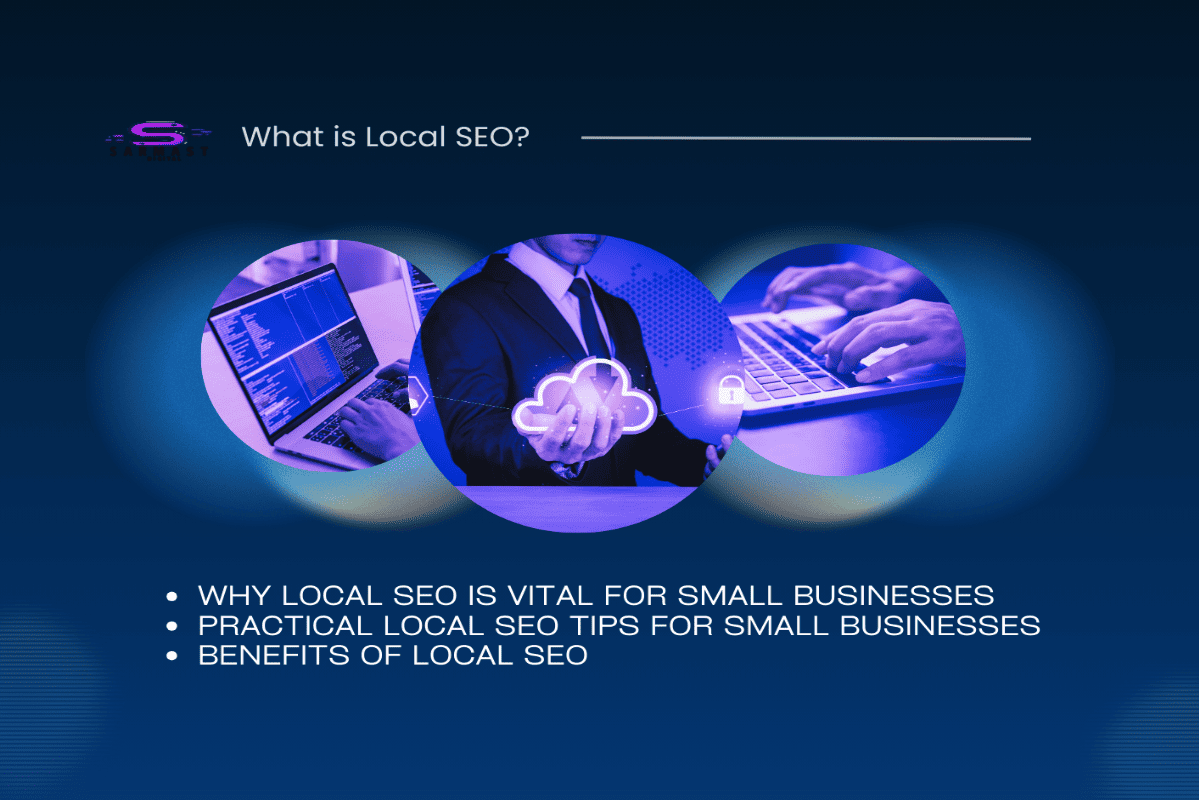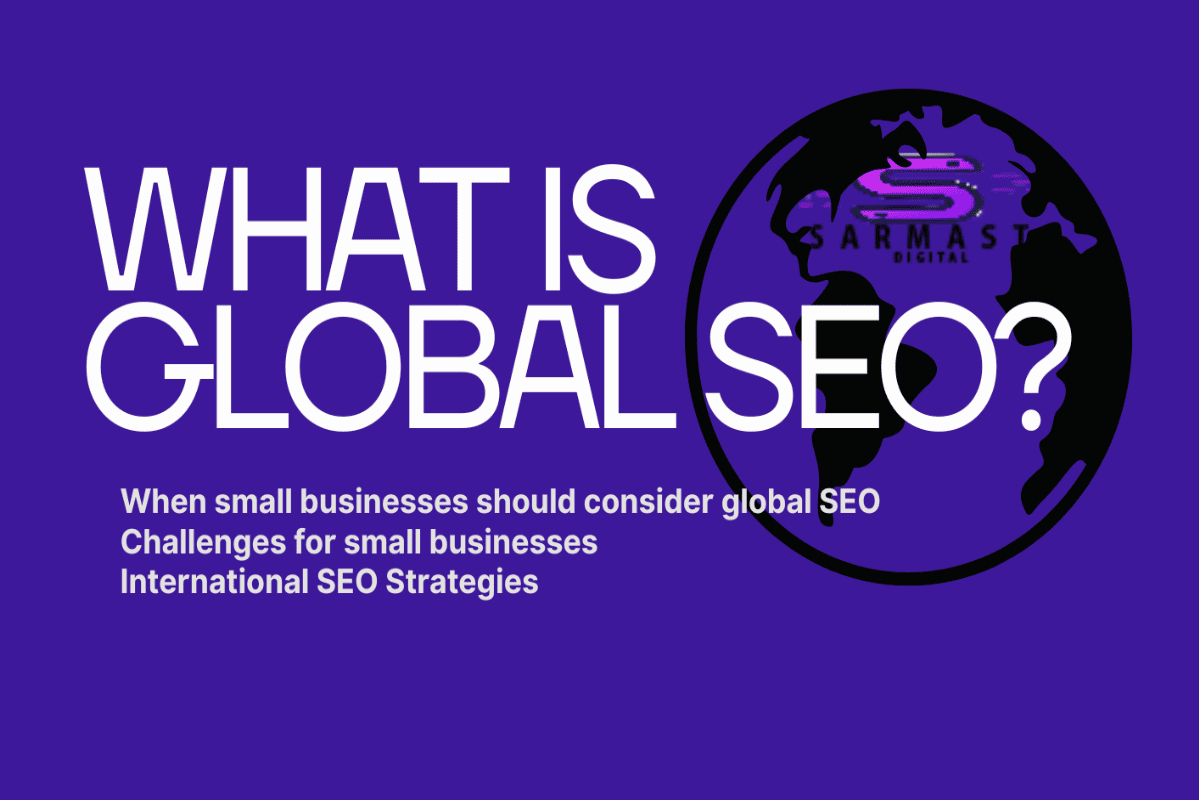Introduction
When running a small business, raises a key question: should you focus on local customers or reach a global audience? SEO plays a crucial role either way.
Local SEO attracts customers searching for services in your neighbourhood, such as “restaurant near me”, while global SEO helps you tap into international markets.
In this article, we’ll explore Local vs Global SEO for small businesses – what they mean, the benefits and challenges they bring, and how to choose the right strategy for your growth.
What is Local SEO?
Definition: Local SEO optimizes your online presence so that people in a specific geographical area can find your business.
Why Local SEO is vital for small businesses?
- Helps to appear in local search results and Google Maps
- Drives foot traffic and local inquiries
- Builds trust in the local community
Examples:
- Local restaurant targeting “best Italian food in New York”
- Small clothing shop aiming to attract nearby shoppers
Practical local SEO tips for small businesses:
- Claim and optimize your Google Business Profile
- Use location-based keywords like “SEO services in Austin”
- Encourage satisfied customers to leave reviews
- Add your business to trusted local directories
Benefits of Local SEO:
- Cost-effective compared to large-scale campaigns
- Builds repeat customers within your area
- Improves visibility for search queries “near me”
In short, if your main goal is to attract people living close to your business, Local SEO is your best weapon.

What is Global SEO?
Definition: Global SEO, also called International SEO, focuses on optimizing your website for audiences in multiple countries and languages.
When small businesses should consider global SEO?
- Selling products online and shipping internationally
- Services that can be delivered worldwide (digital products, consulting)
- Startups aiming to reach multiple markets quickly
Example:
An e-commerce store in the U.S. selling handmade jewelry to Europe and Asia.
International SEO Strategies:
- Create country-specific pages (e.g. example.com/uk)
- Use hreflang tags to indicate language targeting
- Translate and localize content for each market
- Build backlinks from international websites
Challenges for small businesses:
- Higher costs (translation, shipping, ads)
- Competing with established global brands
- Handling legal, tax, and logistics issues in different countries
Still, with the right plan, global SEO can help even small startups scale beyond borders.

Local vs Global SEO: Key differences
To understand better, here’s a clear comparison:
| Aspect | Local SEO | Global SEO |
|---|---|---|
| Target Audience | Nearby customers within a city or region | Audiences across multiple countries |
| Keywords | “plumber in Chicago,” “best café near me” | “buy handmade jewelry online,” “digital marketing tools” |
| Content | Location-specific, local events, community focus | Multilingual, adapted for different cultures |
| Link Building | Local directories, regional news sites | International websites, global blogs |
| Competition | Local businesses | Global brands and multinational companies |
| Cost | More affordable | Requires higher investment |
Takeaway:
Local SEO is best for businesses tied to a physical location, while Global SEO suits digital-first companies ready to expand internationally.
Choosing the right strategy for small businesses
So, which one should you focus on?
Choose Local SEO if:
- Your business has a physical location (restaurant, salon, retail shop)
- Most customers are nearby
- You want cost-effective, faster results
Consider Global SEO if:
- You sell products/services online without geographical limits
- International demand exists
- You can manage translation, shipping, and marketing costs
Decision tip: Start with local SEO to build a strong foundation, then expand globally once your brand and revenue are stable. This ensures affordable SEO strategies for small businesses.

Best Practices for Success (Actionable Tips)
Whether you go local or global, these best SEO practices for small business websites will help you succeed:
- Optimize Google Business Profile
- Add business hours, address, photos, and reviews.
- Essential for local visibility.
- Create Localized Content
- Write blog posts about local events or global topics (depending on your target).
- Translate content for international markets.
- Smart Link Building
- Local: Collaborate with local influencers, community websites.
- Global: Guest posts on international blogs, build industry-related backlinks.
- Use SEO Tools
- Google Trends → Spot keyword trends by region.
- Ahrefs/Semrush → Competitor analysis and keyword research.
- Google Search Console → Track performance across countries.
- Technical SEO
- Fast loading speed, mobile-friendly design.
- Secure HTTPS connection.
- Structured data (schema) for better SERP features.
Pro Tip: Start small but be consistent. SEO is a long-term investment.
Conclusion: Local vs global SEO for small businesses depends on your goals. Local SEO dominates your area; Global SEO expands borders. Many small businesses start local, master SEO and then grow internationally. Learn more about: digital marketing for small businesses

FAQ: SEO for Small Businesses: How to Rank Locally and Globally
Can a small business do both local and global SEO at the same time?
Yes, but it requires more resources. Most small businesses start with local SEO, then gradually expand to global markets.
How long does it take to see results from local SEO?
Typically 3–6 months, depending on competition, consistency, and optimization.
Is global SEO too expensive for startups?
Not necessarily. With the right international SEO strategies, even small startups can rank globally. However, it does require more investment compared to local SEO.
📱 See It in Action
Watch our short Instagram reel to see how these strategies come to life 👇
big goals, small steps 💫
